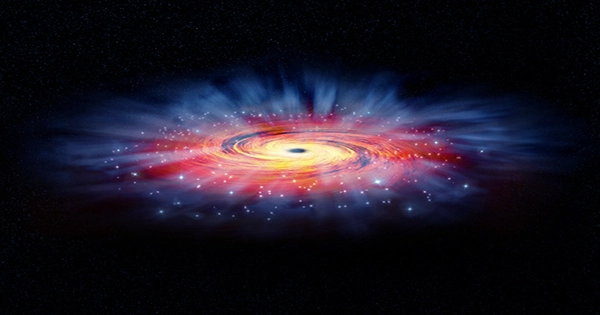Cosmic magnifying glasses, also known as gravitational lenses or gravitational lensing, are an enthralling astrophysical phenomenon. This concept is derived from the gravitational fields of massive celestial objects such as galaxies and galaxy clusters.
According to Albert Einstein’s general theory of relativity, mass has the ability to bend the fabric of spacetime. When light from a distant object strikes a massive foreground object, its path is bent, causing the image of the distant object to be distorted or amplified. This effect functions as a cosmic magnifying glass, allowing astronomers to study extremely distant and faint objects that would be difficult or impossible to observe directly otherwise.
A team of astronomers using NASA’s Hubble Space Telescope measured the expansion rate of the universe using a method that is completely independent of any previous method. Knowing the precise value for how fast the universe expands is critical for determining the universe’s age, size, and fate. Unravelling this mystery has been one of the most difficult challenges in recent years in astrophysics. The new study adds to the evidence that new theories may be required to explain what scientists are discovering.
The researchers’ findings highlight a troubling disparity between the expansion rate calculated from measurements of the local universe and the rate predicted from background radiation in the early universe, before galaxies and stars even existed.
There are two main types of gravitational lenses:
- Strong Lensing: The foreground mass is significant in this case, producing multiple, highly distorted and magnified images of the background object. Around the foreground mass, entire arcs or rings of light, known as Einstein rings, can form.
- Weak Lensing: When the foreground mass is less massive, weak lensing occurs, resulting in subtle distortions in the shapes of background objects. While the magnification is not as strong as in strong lensing, it provides useful statistical data about the distribution of matter in the universe.
Gravitational lenses have many uses in astronomy and cosmology. They’ve been used to investigate the properties of distant galaxies, galaxy clusters, dark matter distribution, and even to calculate the universe’s expansion rate (the Hubble constant). They also provide important insights into the nature of dark matter, a mysterious form of matter that does not emit light and can only be observed through its gravitational effects.
Scientists can peer deep into the universe using cosmic magnifying glasses, revealing hidden cosmic structures and providing critical information about the evolution and dynamics of our vast universe.
















